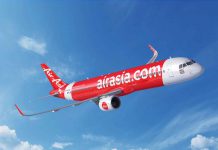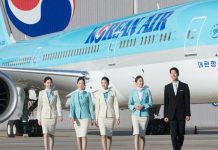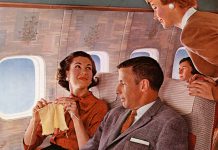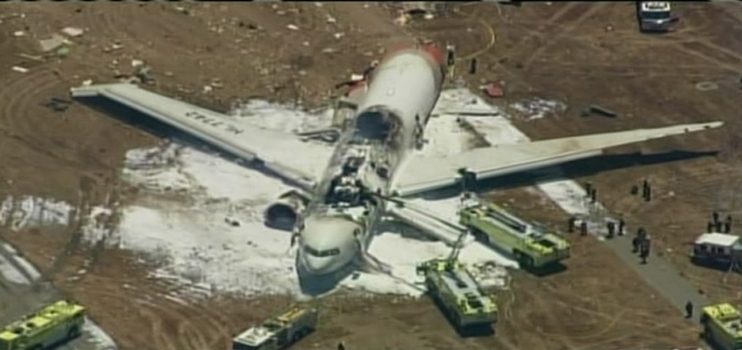The U.S. National Transportation Safety Board finds the crash of Asiana Flight 214 last year at San Francisco to be the result of “the flight crew’s mismanagement of the approach and inadequate monitoring of airspeed.”
That’s the official probable cause, but it’s what contributed to the July 6, 2013 crash of the Boeing 777-200, which killed 3 and seriously injured 49, that’s stirring controversy in the wake of the NTSB’s findings. Specifically, the Safety Board identified “complexities of the autothrottle and autopilot flight director systems, and the crew’s misunderstanding of those systems” as contributing to the accident. Boeing has strongly refuted this finding.
Flight 214 was on final approach to San Francisco International’s Runway 28L on a perfect clear summer’s day with virtually no wind when it struck a seawall near the threshold of the runway. There were 307 on board. The outcome could have been far worse if not for the structural integrity of the 777.
Some important context: in a 139-page Operations Group Factual Report released by NTSB late last year it was revealed that the pilot at the controls of Asiana Flight 214 said he was “very concerned” about landing a Boeing 777 at San Francisco International Airport visually, without aid of an electronic glideslope indicator, which was inoperative. The device helps pilots monitor descent to the runway. However a visual landing system was working.
Cultural factors appear to have played a significant role in the accident. Last December the NTSB released its own Operational Group Factual Report. What that report said is instructive:
– Captain Lee Kang Kuk knew the glideslope indicator on Runway 28L was inoperative. But because other pilots were doing visual approaches, the report says “he could not say he could not do one.”
– Lee told investigators he was blinded for a brief moment while on approach. Why no sunglasses? He said it would have been impolite to don them when flying with his PM, the pilot monitoring his actions.
– Lee didn’t break off the approach and initiate a “go-around” maneuver on his own because “Normally only in our Korean culture the one step higher level[the final decision people]…he decide the going around thing. It’s very important thing. As a first officer (co-pilot) or the low level people they dare to think about the going around thing. It’s very hard…The instructor pilot got the authority. Even [if] I am [in] the left [command] seat, this is very hard to explain, that is our culture.”
Harder to explain, perhaps, is why CRM – Cockpit Resource Management – didn’t take hold. Life-saving CRM, stresses communication, collaboration and individual initiative. Lee Kang Kuk told investigators he had taken CRM training “frequently.” In a post-crash interview, the man in control of Asiana 214 was asked if Asiana encouraged junior pilots to “speak up if they felt uncomfortable about something.” Lee Kang Kuk responded “yes.”
In its June 24th decision the Safety Board finds that the cockpit crew mismanaged the initial approach to the airport, that the 777 was “well above the desired glidepath as it neared the runway.” As a result the captain chose an “inappropriate” autopilot mode concludes NTSB in a written release, that resulted – unbeknownst to him – in “the autopilot no longer controlling airspeed.”
Getting the airspeed right on final approach is critical.
As the Boeing 777 descended below the proper glidepath, the crew didn’t know airspeed had bled off. “Nor did they respond to the unstable approach,” concludes the Safety Board. By the time the crew initiated a go-around maneuver Flight 214’s fate was sealed. The craft was below 100 feet and it was too late. Then, it struck the seawall.
For Najmedin Meshkati, Professor of Civil/Environmental Engineering and Industrial and Systems Engineering, who also conducts and teaches human factors in aviation safety at the University of Southern California, Asiana flight OZ214 is a watershed in aviation.
Professor Meshkati one of the aviation industry’s foremost experts on human factors machine interface. He has taught at the renowned 62-year old USC Aviation Safety Program since 1989 and was its director for seven years from 1992 to 1997. Meshkati is also a Jefferson Science Fellow and was a Senior Science and Engineering Advisor to the US Secretary of State. He is the author of one of the original and pioneering articles on the role of cultural factors in aviation safety, which was published in the October 1996, special issue of the International Civil Aviation Organization (ICAO) Journal.
For Professor Meshkati there are two key issues that cultural factors impact – the interaction with others in the cockpit and the human/machine interface.
“The first was very clear and played out very strongly [in relation to the Asiana 214 incident] and is a text book example of cultural factors. The latter of automation interaction is less well understood or discussed,” Professor Meshkati said.
“In this accident,” says NTSB Acting Chairman Christopher A. Hart, “the flight crew over-relied on automated systems without fully understanding how they interacted.” Hart went on to say that though automation on the whole has rendered flying safer, “even in highly-automated aircraft, the human must be the boss.”
To that end the Safety Board, among other things, recommends “reinforced adherence to Asiana flight crew standard operating procedures, more opportunities for manual flying for Asiana pilots, a context-dependent low energy alerting system and both certification design review and enhanced training on the Boeing 777 autoflight system.”
In a statement Boeing takes issue with the NTSB’s assessment of autoflight’s contribution to the accident.
Specifically the manufacturer said:
– “Respectfully disagrees with the NTSB’s statement that the 777’s auto-flight system contributed to this accident, a finding that we do not believe is supported by the evidence.”
– Notes that “the 777 has an extraordinary record of safety – a record established over decades of safe operation…the auto-flight system has been used successfully for over 200 million flight hours across several airplane models, and for more than 55 million safe landings.”
– Says “evidence collected during this investigation demonstrates that all of the airplane’s systems performed as designed.”
– Says it’s “committed to a process of continual improvement of our airplanes, and we will carefully review the NTSB’s recommendations.
– Cautions that “it is important that any recommendation concerning changes to the airplane’s design be reviewed with great care, and with due consideration for the potential unintended consequences of any change.”
We haven’t heard the last of the debate about what caused Asiana 214 to crash, not by a long shot.
























